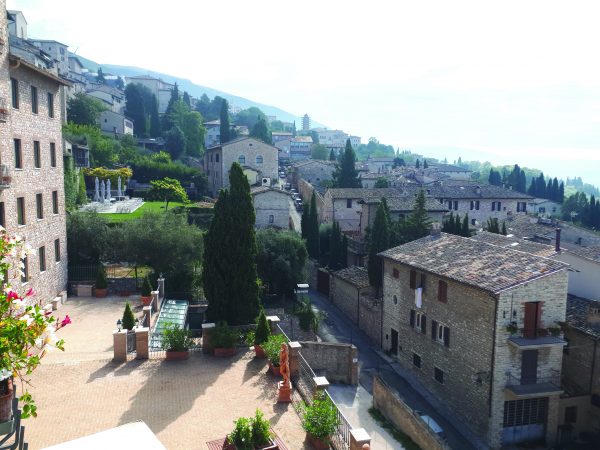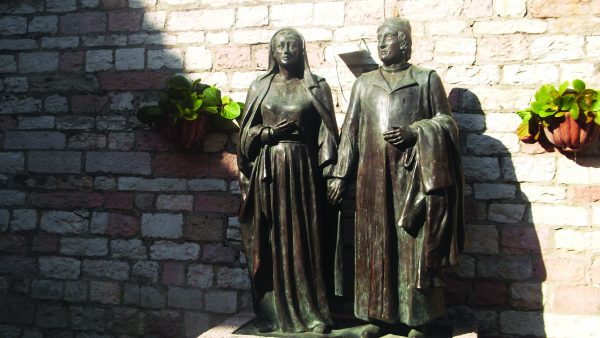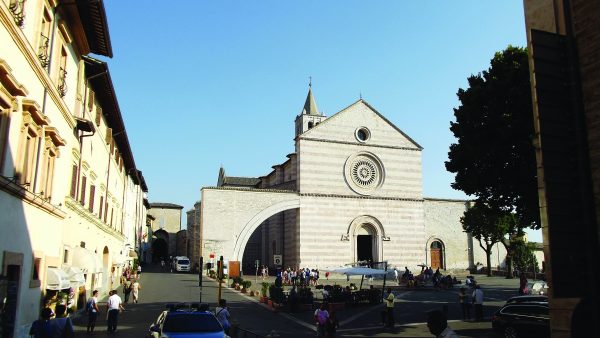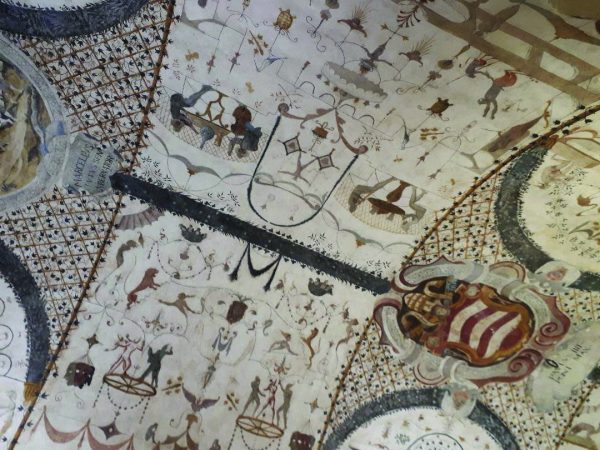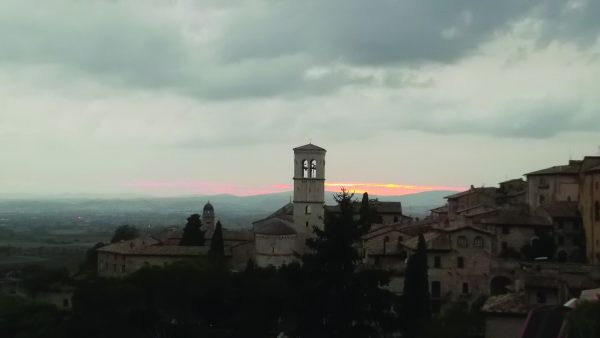Jane Keightley visits the famous Umbrian hill town to see the sights, enjoy the food and find out more about the saint whose values are woven into the life of Italians nationwide…
Photos by Jane Keightley.
As the last tourist buses roll out of town, the whole atmosphere of Assisi changes. With five million visitors annually, many of them on a pilgrimage to visit the birthplace of St Francis, it is one of the most visited places in Italy. However, find yourself somewhere to stay the night and you gain a whole new experience of the town. I found an apartment just off the main square, the Piazza del Comune, and was looking forward to two days of exploring the town and the surrounding area. Everywhere you turn there are images of St Francis. Shop windows full of statues and small shrines on the side of the street abound. As you walk along the street there are nuns, monks and priests everywhere. There is no mistaking that this is a very important place of pilgrimage for Christians. But it is home for many lay people too, and when you stay overnight you get to see a real slice of local life.
To the basilica
Of course, my first priority was to visit the Basilica di San Francesco. St Francis died in October 1226, was buried here, and the building of this magnificent church was started soon after. The Lower Church took shape first and the Upper Church was built on top of it. The site was previously known as the Colle del Inferno, the ‘Hill of Hell’, and was where criminals were taken for execution. Francis had chosen this site for his burial as a gesture of humility. But to no avail. It was renamed Colle del Paradiso and one of the most magnificent buildings in Italy was built.
For the art lover today, seeing the frescoes in the Basilica depicting the life of St Francis is a special treat. There has been some controversy over whether the frescoes were actually painted by Giotto, but they are magnificent whoever the artist may have been. But for pilgrims the main attraction is in the Lower Church, namely the tomb of St Francis. Even if you are not particularly religious, the air of veneration is palpable as you too quietly pay your respects.
Exploring the centre
From the Basilica, I walked back down the Via San Francesco towards the Piazza del Comune, where
I admired the Temple of Minerva, which today consists of six well-preserved Corinthian columns and an architrave and pediment from a 1st-century Roman temple, standing in front of a Baroque church. As
I discovered later that evening, its steps are also the perfect place to sit and eat a gelato.
Onwards to the Duomo of St Rufino. Inside is the font where St Francis and St Clare were baptised. Less frequented by tourists and pilgrims than the Basilica, it is worth a visit to enjoy its splendid façade and spectacular rose window, one of the great masterpieces of the Umbrian Romanesque style. Saint Clare was a devoted follower of St Francis who started her own order of nuns, the Poor Clares, under the guidance of her mentor.
Her own basilica stands at the opposite end of the town to that of St Francis. As well as housing the remains of St Clare herself, it also holds the famous Byzantine crucifix of San Damiano. Come in the late afternoon if you can, because from the piazza in front of the church there is a magnificent view of the Vale of Spoleto below, and this is one of the best places to come and view the beautiful sunsets that you get here.
Beyond the town
Assisi is situated on the side of Mount Subasio and can be seen from miles away as you drive towards it. Towering above the town is the Rocca Maggiore, a castle that dates back to the 12th century. It is a hard climb up to the castle, but you are rewarded with an all-embracing view of Assisi and the valley below.
Outside the walls of the town are two more sites connected to St Francis. A 15-minute walk brings you to the Franciscan church of San Damiano, one of the most significant places in the life of St Francis. It was here in 1205 that the saint said he heard the words “Francis, go and repair my church which is falling down”. He brought St Clare here and she and her followers set up a convent. This is also where St Francis composed his Canticle of the Creatures. It is a peaceful place to visit and doesn’t get as busy as the main Franciscan sights in Assisi.
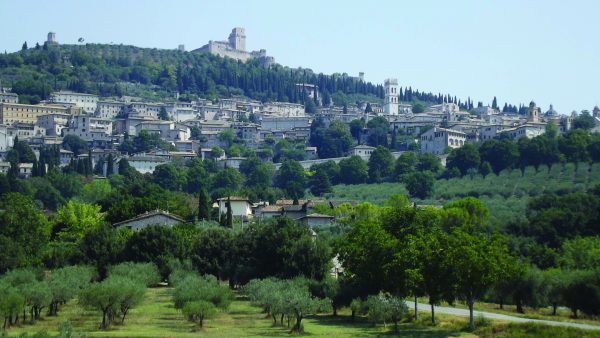 Further down in the valley is the huge, domed Basilica di Santa Maria degli Angeli. This was built to shelter the Porziuncola, a small chapel where St Francis lived and died and the centre of the early Franciscan Order. It is also home to the rose garden where he threw himself into the rose bushes to quell his lustful urges. It is said that the thorns dropped off after contact with his body and the rose bushes now bloom thornless every May.
Further down in the valley is the huge, domed Basilica di Santa Maria degli Angeli. This was built to shelter the Porziuncola, a small chapel where St Francis lived and died and the centre of the early Franciscan Order. It is also home to the rose garden where he threw himself into the rose bushes to quell his lustful urges. It is said that the thorns dropped off after contact with his body and the rose bushes now bloom thornless every May.
There is also a story that a visitor once snipped a cutting from these roses when nobody was looking and took it home with them. When they planted it the thorns grew back!
I wanted to visit the Eremo delle Carceri, which is a monastery situated about 6km east of Assisi. To get the most from the experience, it is good to walk up to it via the steep path, following in the footsteps of countless devoted pilgrims. But you can drive there, and I must admit that I did, as time was short! Still, I was so pleased I had made the effort to squeeze in this final visit. The hermitage was an early place of retreat for St Francis and his followers, and one famous story is that the saint made the well in the courtyard flow with water. This is depicted in one of Giotto’s frescoes in the Basilica. In the chapel there is a collection of various relics, the pillow of St Francis and a piece of the Golden Gate through which Jesus passed into Jerusalem.
The balcony of Umbria
After a day’s immersion in the local history, religion and culture there is nothing better than a chance to relax and sample the local delicacies. Black truffles feature heavily on the menu here and were a favourite of mine, served with Umbrian strangozzi pasta. Another highlight was the shallots in a balsamic sauce.
The next day dawned bright and sunny and I decided to explore a couple of places nearby. I had heard that Montefalco, a small hill town not far away, was called the ‘Balcony of Umbria’ and that it had wonderful views and frescoes of the life of St Francis unknown to most visitors. It is also the birthplace of eight saints – which is impressive even by Italian standards!
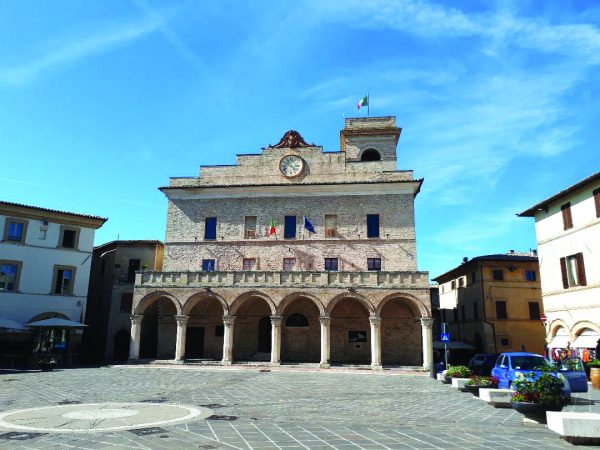 The centre of the town is the Piazza del Comune, which is surrounded by a maze of cobbled streets. You can explore the whole town in an hour and it is beautiful, but the highlight of the morning for me was my visit to the Museo Civico, which incorporates the church of San Francesco. Here are the frescoes of the Life of Saint Francis by Benozzo Gozzoli. I became a fan of Gozzoli after admiring his frescoes in the tiny chapel in the Medici Palace in Florence. When you come to Assisi, do make a detour to Montefalco and the museum. I can assure you that you won’t be disappointed.
The centre of the town is the Piazza del Comune, which is surrounded by a maze of cobbled streets. You can explore the whole town in an hour and it is beautiful, but the highlight of the morning for me was my visit to the Museo Civico, which incorporates the church of San Francesco. Here are the frescoes of the Life of Saint Francis by Benozzo Gozzoli. I became a fan of Gozzoli after admiring his frescoes in the tiny chapel in the Medici Palace in Florence. When you come to Assisi, do make a detour to Montefalco and the museum. I can assure you that you won’t be disappointed.
After lunch in the main square, I decided to head off to visit Lake Trasimeno. This is the fourth largest lake in Italy but is totally different in character to the more famous northern lakes of Como, Maggiore and Garda. Whereas those are all surrounded by dramatic mountain ranges, Trasimeno is situated by low, rolling hills. Nevertheless it has its own distinct charm and there are villages around its watery edge that are full of history. My favourite was Passignano sul Trasimeno with its crumbling medieval city walls and historic castle. The area has been the scene of many battles throughout the years and it was on the shores of the lake that Hannibal defeated the Romans in 217 BC.
Back to Assisi to enjoy one of its famous sunsets and an aperitivo before dinner on my last night in this beautiful place. I am not a particularly religious person, but after a couple of days here I was fascinated by the story of St Francis and his followers. Assisi is a place you can appreciate on so many levels. Whether it be as a pilgrim, as a tourist, or as a lover of art, architecture and historic towns, this captivating Umbrian hill town will really tick all the boxes.
Find out more info about the area in our Assisi archive.

